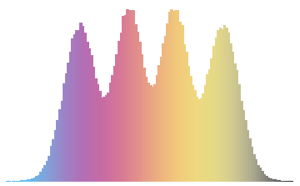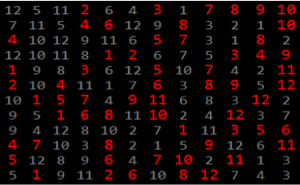Eigenvalue Spacings of Gaussian Distributions
The eigenvalue spacings (differences of consecutive eigenvalues) of matrix distributions have a universal limiting form that is observed in many systems in nature, such as the energy-level spacings of heavy atoms.
Sample eigenvalue spacing of 2×2 matrices from different Gaussian ensembles.
In[1]:=

gaussiandists = {GaussianOrthogonalMatrixDistribution[2],
GaussianUnitaryMatrixDistribution[2],
GaussianSymplecticMatrixDistribution[2]};In[2]:=

spacingdists =
MatrixPropertyDistribution[{-1, 1}.MinMax[Eigenvalues[x]],
x \[Distributed] #] & /@ gaussiandists;In[3]:=
gaps = Normalize[RandomVariate[#, 10000], Mean] & /@ spacingdists;Compare the histograms for each distribution with their closed form, also known as Wigner surmise for Dyson indices  of
of  ,
,  , and
, and  .
.
In[4]:=

WignerSurmisePDF[x_, \[Beta] : 1] := Pi (x/2) Exp[-Pi (x/2)^2]
WignerSurmisePDF[x_, \[Beta] : 2] := 2 (4 x/Pi)^2 Exp[(-4/Pi) x^2]
WignerSurmisePDF[
x_, \[Beta] : 4] := (64/(9 Pi))^3 x^4 Exp[(-64/(9 Pi)) x^2]show complete Wolfram Language input
Out[5]=

























